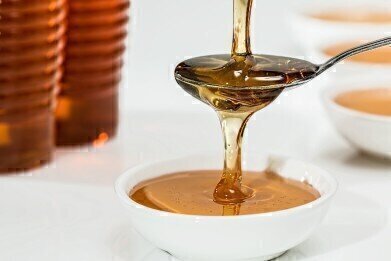HPLC, UHPLC
Toxins in Honey — Chromatography Investigates
Jul 13 2015
Bees are essential element of life on Earth. Their contribution to the food chain is enormous — with one estimate putting the figure at £651 million per year.
Bees also provide an important foodstuff — honey. The honey that we eat and use is produced by a type of bee from the genus Apis, which we commonly refer to as the honeybee. Although many other bee types produce honey, the honey is generally does not contain the properties we like and desire. Humans have been using honey in various forms for over 8000 years — both as a food or food additive and for medicinal purposes.
But throughout history, toxic honey has caused sickness and death. A recent paper reports on two new toxins that have been hiding, and they were identified using chromatography.
Toxins in honey
Why do bees produce toxins in the first place? Well, it is unintentional and they are produced as a by-product of the honey they produce after certain types of flowers are visited. There are certain flowers that the bees collect nectar from that are toxic to humans but are completely safe for bees. And throughout recorded history — there have been incidents reported where toxic honey has got the blame.
The honey produced by bees feeding on rhododendron shrubs is known to contain alkaloids that are poisonous to humans. The honey contains a neurotoxin that produces light-headedness and even hallucinations — it even helped to defeat Roman invaders in Turkey.
Legend says that people loyal to King Mithridates left honeycombs — made by bees that had been feeding on rhododendrons — for the Roman soldiers. After the soldiers ate the honeycomb they fell into a stupor due to the hallucinogenic honey, they became easy prey and were easily defeated. There are still cases nowadays of people falling ill to this toxic honey, usually visitors to the region who take a piece of honeycomb to eat.
The toxins in honey are usually diluted because the honey we consume is usually mixed with honey from different hives — this reduces the toxin concentration and makes the honey safe for humans to consume.
In New Zealand, honey is analysed to check that toxin levels are below a maximum level. The toxin of choice for New Zealand honeybees is tutin, which is formed when honeybees feed on honeydew which has been secreted by insects known as passion vine creepers, that in turn have eaten sap from poisonous tutu bushes. Again, it is from single hives that most poisonings occur — with visitors and tourists among the victims.
Hidden toxins – blame the sugar
A team from the New Zealand Institute for Plant and Food Research Limited has developed a new chromatography method for honey analysis using LC-MS and have found two new tutin-based toxins previously hidden by the sugars in the honey. LC-MS is widely used in food analysis as discussed in this article, Analysis of Artificial Colorants in Various Food Samples using Monolithic Silica Columns and LC-MS.
Honey on toast anyone?
Digital Edition
Chromatography Today - Buyers' Guide 2022
October 2023
In This Edition Modern & Practical Applications - Accelerating ADC Development with Mass Spectrometry - Implementing High-Resolution Ion Mobility into Peptide Mapping Workflows Chromatogr...
View all digital editions
Events
Apr 28 2024 Montreal, Quebec, Canada
May 05 2024 Seville, Spain
May 15 2024 Birmingham, UK
May 19 2024 Brno, Czech Republic
May 21 2024 Lagos, Nigeria














